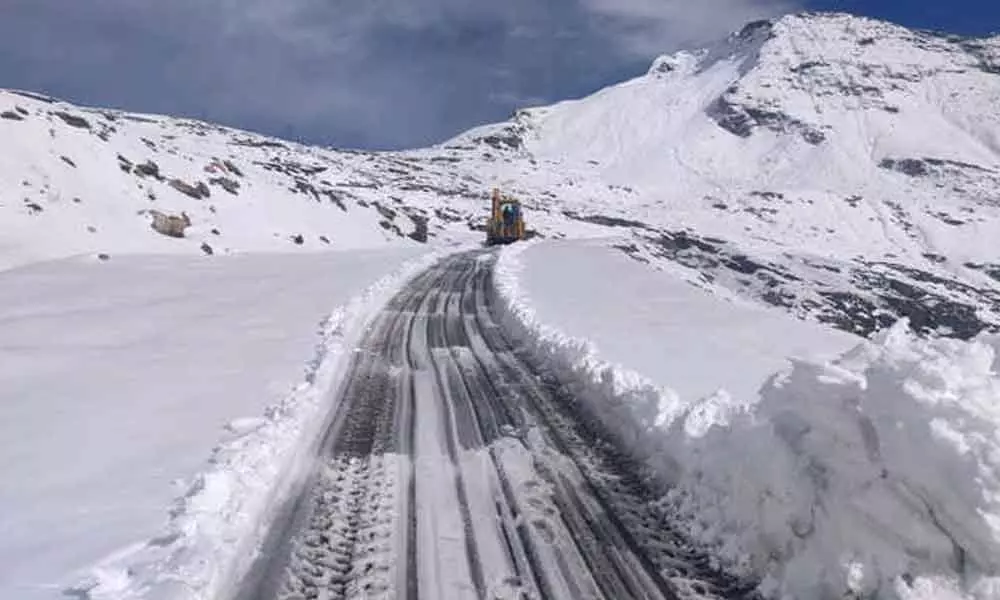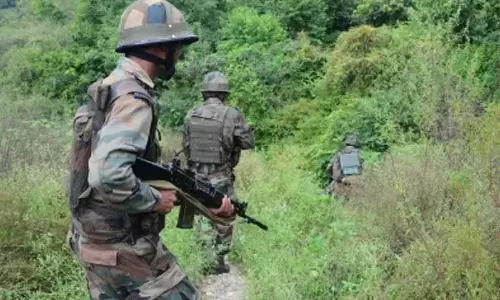Coronavirus gives fragile Rohtang Pass recovery time

Coronavirus gives fragile Rohtang Pass recovery time
The Coronavirus-induced lockdowns have cleaned up the fragile Rohtang Pass with the piles of trash almost vanished and nature making a comeback in the cold, rugged and rocky mountains of the Pir Panjal range of the Himalayas -- the origin of one of North India's major rivers, the Beas.
The Coronavirus-induced lockdowns have cleaned up the fragile Rohtang Pass with the piles of trash almost vanished and nature making a comeback in the cold, rugged and rocky mountains of the Pir Panjal range of the Himalayas -- the origin of one of North India's major rivers, the Beas.
Also the vehicular pollution plummeting to levels unseen in the living memory."What a pleasant surprise to see no littering of trash in hills en route to the Rohtang Pass," remarked Nikita Pandey, a tourist from Delhi. "We should be thankful to Covid-induced lockdowns that gave nature a recovery time to regain its glory," she told IANS, while pointing towards spots where non-biodegradable waste was normally dumped carelessly along the banks of the glacial-fed Beas river near Marhi, en route to the Rohtang Pass from Manali.
The Rohtang Pass is located at an altitude of 13,050 feet and 52 km from tourist resort Manali in Himachal Pradesh. Her friend Gauri Vaidya said in her past visits, the ninth this time in as many years, she felt angry to see the stunning amount of waste like beer and liquor bottles and food sachets dumped haphazardly in the mountains.
"This visit is memorable to see nature blooming again amid pine forests and gurgling streams," she added. The picturesque Rohtang Pass, which remains under snow even during the onset of summer, is a major attraction for both domestic and foreign tourists.
According to the state tourism department, more than 1,00,000 tourists visit the Rohtang Pass every year and tourism, including skiing, trekking and paragliding, is a key source of income for the local people.
For more than five months from December, the pass remains cut off from the rest of the country due to heavy snowfall. After nearly six months of sealing borders, the state government on September 15 threw open its borders for free movement of people and goods.
"In the last one or two weeks, the trend of tourists is picking up in Manali and its nearby areas. Compared to thousands of tourists that normally descend here daily ahead of Diwali, now tourists, mainly from the northern states, are thronging that too on weekends," an official of the state Himachal Pradesh Tourism Development Corp. told IANS here.
Travel agent Naresh Thakur said the tourists from Manali now prefer to travel towards the Lahaul Valley via the newly opened Atal Tunnel, beneath the Rohtang Pass, rather than taking the long, treacherous route of the pass.
"Snow is the only attraction for the tourists and the mighty Rohtang Pass is the only destination near Manali that remains marooned in snow cover till end of May. In this season, Rohtang slopes are totally bereft of snow cover, so they are not on their preferred list," he added.
Government officials said the Rohtang Pass normally closes for the traffic every year in December owing to snowfall."This time the Rohtang Pass remained closed for the tourists for a longer duration i.e. from December to mid of September. Firstly due to snapping of road links by snow and then due to coronavirus lockdowns. This has given enough time for nature to revive," an official said.
Trekking along the Rohtang Pass is another adventure pursuit, the backbone of the state's economy, from June to September.
Excessive emission of carbon monoxide from the vehicles and huge quantities of trash left behind by tourists on the Rohtang Pass are taking a heavy toll on the snow cover, says the National Environmental Engineering Research Institute (NEERI), a Nagpur-based institute that has carried out studies on the impact of pollution on the local ecology.
Besides tourist vehicles, a major component of the traffic is also the defence vehicles, with the forces taking supplies to strategic points through the Rohtang Pass. The deteriorating ecology of Rohtang, meaning "piles of dead bodies" in Persian, has also caught the attention of the National Green Tribunal (NGT).
With its direction, the government has checked unregulated plying of vehicles by imposing an environmental cess on each of the 1,300 vehicles permitted every day to cross the Rohtang Pass, besides construction of eco-friendly toilets and installation of garbage collection bins en route.
According to a journal of the Asiatic Society, Lieutenants A. Broome and A. Cunningham trekked to the Rohtang Pass on July 7, 1839, to trace the sources of the Punjab's rivers.








